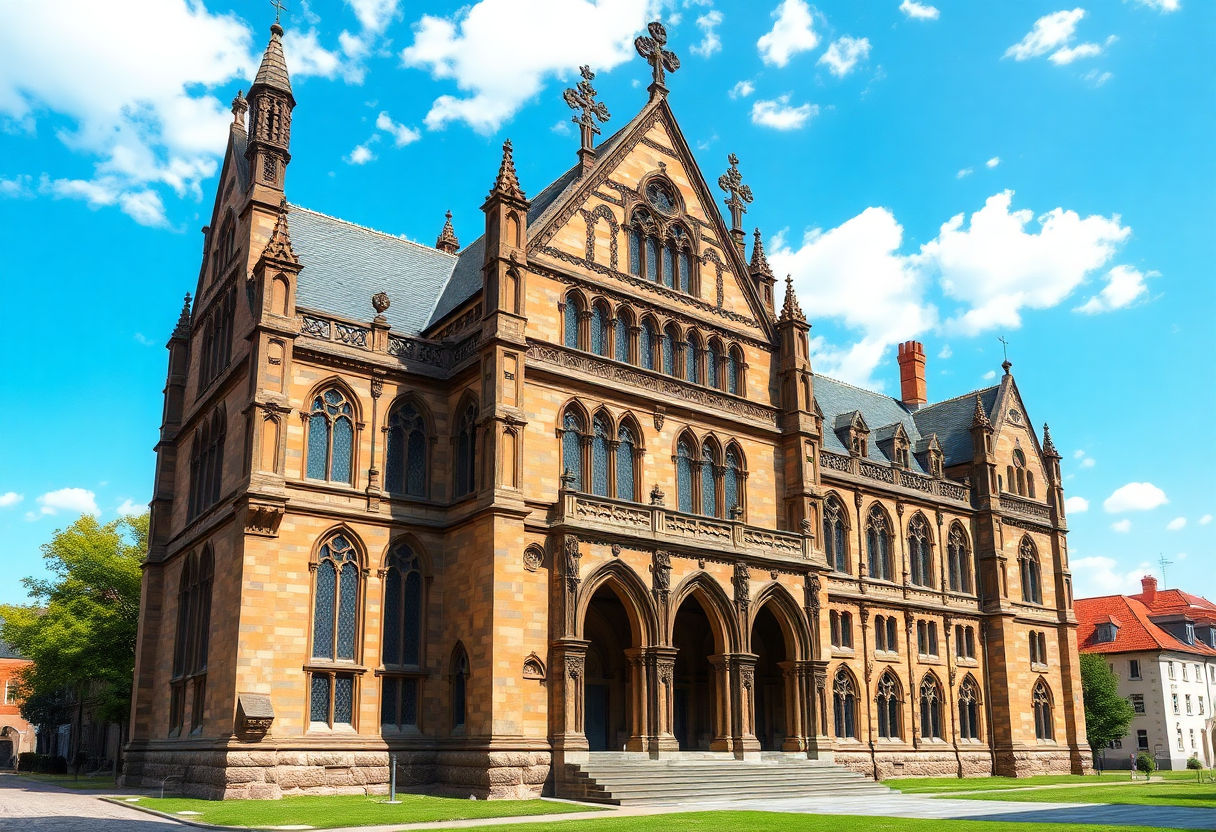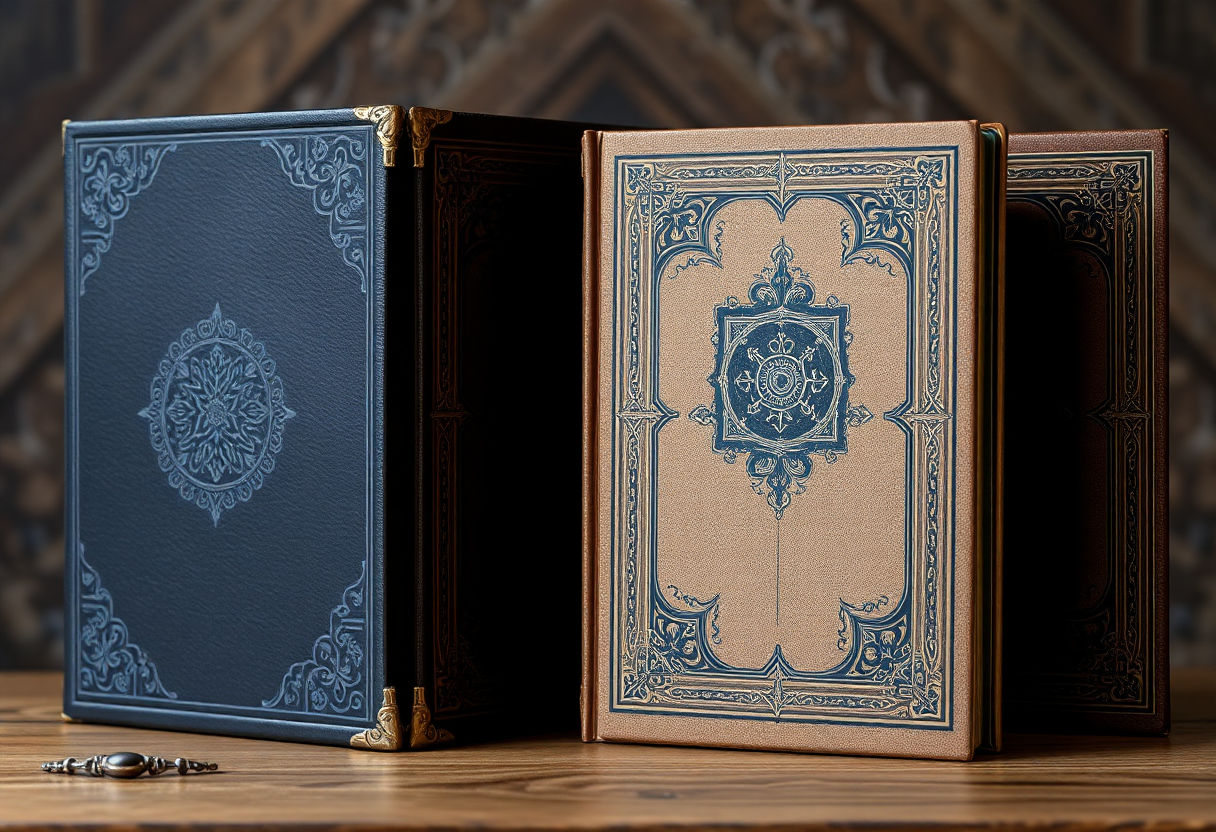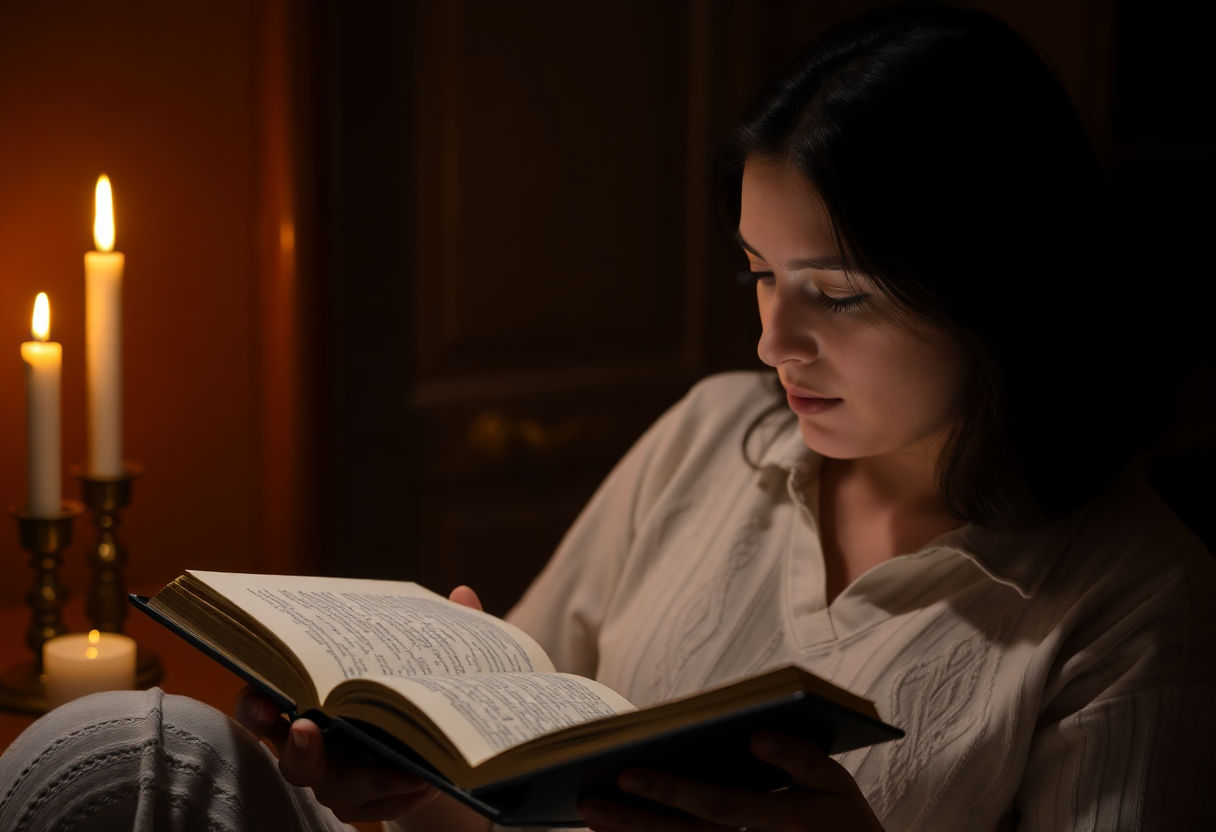In recent years, the allure of dark academia literature has captured the imagination of readers worldwide. This intriguing genre, often characterized by its brooding atmosphere and intellectual undercurrents, delves into themes of mystery, elitism, and intellectual pursuit. Tracing its roots from Gothic traditions to modern cultural expressions, dark academia offers a rich blend of literary depth and aesthetic appeal. As we explore its origins, themes, and cultural significance, we also highlight notable works that define this genre. Join us in uncovering the mystique of dark academia books and their enduring resonance in today’s literary landscape.
Key Takeaways
- Dark academia literature is characterized by themes of intellectualism, mystery, and an appreciation for the classical arts and humanities.
- The genre traces its roots to gothic literature, absorbing its eerie and melancholic atmospheres, and adds a layer of academic elitism and historical intrigue.
- Dark academia’s cultural significance is reflected in its influence on modern fashion, lifestyle, and social media trends, particularly among younger audiences.
- The enduring appeal of dark academia lies in its exploration of human curiosity and the pursuit of knowledge, often intertwined with philosophical and existential queries.
- Notable works within the genre, both classic and contemporary, exemplify its unique narrative style and thematic preoccupations, making it a distinctive literary category.
Origins of Dark Academia

Dark academia, as a literary and aesthetic movement, draws deeply from the rich tapestry of history and tradition. Its origins are rooted in a romanticized vision of higher education, reminiscent of classical antiquity and European intellectualism. This fascination can be traced back to the literary and philosophical works of the Enlightenment, which emphasized the pursuit of knowledge and the aesthetic beauty of learning environments like libraries and universities.
The emergence of dark academia in literature coincides with the post-World War period, where themes of existentialism and introspection became prevalent. Notable early influences include the gothic revival of the 18th and 19th centuries, which celebrated the macabre and mysterious elements often found in dark academia. Authors such as Mary Shelley and Oscar Wilde explored these motifs, intertwining them with philosophical contemplations.
Moreover, dark academia reflects a cultural longing for the traditions and intellectual rigor of the past, particularly during times of uncertainty. The resurgence of interest in classical studies, Latin phrases, and Renaissance art during the 20th century further fueled dark academia’s aesthetic and thematic demands. This nostalgic yearning, combined with the allure of exclusivity found in prestigious institutions, forms the core of the dark academia ethos.
The transition from mere academic pursuit to an immersive cultural experience marks the distinct evolution of dark academia from its literary roots. This transformation underscores the perpetual allure of forbidden knowledge and the esoteric, breathing life into the genre’s contemporary manifestations. As a result, dark academia continues to captivate, offering a profound exploration of identity through the prism of the past.
Characteristics of Dark Academia Books

Dark academia books are characterized by their unique blend of intellectual pursuits, aesthetic allure, and a sense of mystery, often set against the backdrop of prestigious academic institutions. These novels frequently glorify the pursuit of knowledge and the idea of learning for the sake of personal enrichment, rather than for practical or monetary gain. Here are some defining characteristics:
-
Atmospheric Setting: The ambiance plays a crucial role, with settings typically situated in old universities or secluded libraries where architecture adds to the enigmatic aura. These environments often contribute to the overarching feeling of nostalgia and mysticism.
-
Complex Characters: Protagonists in dark academia are usually intellectually driven, flawed individuals. Their inner conflicts and moral ambiguities serve as a powerful narrative force, exploring themes of ambition, obsession, and the pursuit of knowledge.
-
Intellectual Themes: At the core of dark academia literature lies a deep engagement with classical studies, philosophy, art, and literature. This intellectualism fosters a contemplative atmosphere, often accompanied by references to historical texts and philosophical debates.
-
Moral Ambiguity and Tension: Dark academia delves into the darker aspects of ambition and obsession. Characters often grapple with ethical dilemmas, creating narratives rich in suspense and psychological complexity.
-
Exploration of Aestheticism: The genre places strong emphasis on aesthetic appreciation. Descriptions are lush, with vivid imagery capturing the intricate details of settings and attire, evoking a sensory experience.
-
Tragedy and Mystery: Notably, these stories frequently incorporate elements of tragedy, secrecy, and unforeseen twists, enhancing their allure. This intertwining of mystery and intellect is central to the genre’s mystique, capturing readers’ imaginations through suspenseful narratives.
Themes Explored in Dark Academia

Elitism is a recurrent theme in dark academia, exploring the allure and dangers of exclusive societal circles. Many dark academia narratives are set within prestigious institutions, emphasizing a seductive yet perilous world where knowledge and status often dictate one’s social position. This focus on hierarchy highlights the tension between privilege and the desire for acceptance, often leading characters to confront their moral compass.
Mystery and Secrecy play pivotal roles in dark academia, underpinning the genre’s charm with a veil of enigma. Characters frequently engage in clandestine activities or unravel secrets that challenge their perceptions of reality. This emphasis on uncovering the unknown propels the narrative forward, inviting readers into a labyrinth of suspense and intrigue. The presence of hidden truths in dark academia serves as a catalyst for character development and thematic exploration.
Intellectualism lies at the heart of dark academia, celebrating a deep reverence for classic literature, philosophy, and the pursuit of knowledge. Characters often engage in intellectual debates, drawing from the works of ancient scholars and philosophers to justify their actions and beliefs. This theme underscores the genre’s fascination with the intricate dance between intellect and morality, raising questions about the consequences of unchecked ambition.
Together, these themes create a rich tapestry that defines dark academia, inviting readers to ponder the complexities of human nature within the confines of a mysterious, intellectually charged world. Through their exploration, these narratives offer a profound commentary on the intersection of knowledge, power, and moral ambiguity.
Influence of Gothic Literature
Gothic literature, a genre steeped in mystery and romanticism, plays a pivotal role in shaping the aesthetic and thematic elements of dark academia. With its roots in the late 18th and early 19th centuries, Gothic literature introduced narratives rich in emotion, atmospheric settings, and complex characters—traits that seamlessly integrate into the dark academia tapestry.
One of the primary influences of Gothic literature on dark academia is the use of atmospheric settings. Gothic novels often feature dark, brooding environments such as ancient castles or decaying mansions, evoking a sense of mystery and foreboding. Similarly, dark academia often situates its narratives within the hallowed halls of Ivy League-style universities or grand, antiquated libraries, casting a similar pallor of history and intrigue.
Moreover, the exploration of the human psyche and the supernatural, prevalent in Gothic works, finds echoes in dark academia. Characters in both genres are often intellectuals, grappling with deep philosophical questions or escaping reality through academic pursuits. This fusion of intellect and emotion creates a rich narrative style that is both engaging and thought-provoking.
Themes such as isolation and loneliness also permeate both genres. Characters are often portrayed as outsiders, striving to connect with an arcane world beyond their understanding. This sense of disconnection is a powerful driver of plot and character development, resonating deeply with readers seeking depth and complexity.
In essence, Gothic literature provides a foundation of rich narrative traditions and immersively dark atmospheres that continue to inspire and be reimagined within the context of dark academia, cementing its enduring legacy in modern literary culture.
Notable Dark Academia Books
Dark academia literature offers a rich tapestry of stories that captivate readers with their intellectual depth and psychological exploration. At the heart of this genre are several notable works that stand as pillars of dark academia’s thematic and stylistic identity.
One of the quintessential novels that epitomize dark academia is The Secret History by Donna Tartt. This novel is pivotal to the genre, weaving a tale of obsession and moral ambiguity amidst a fictional Vermont college setting. Tartt’s compelling narrative captures the darker undercurrents of academic life, questioning the limits of knowledge and morality.
Another significant contribution is A Separate Peace by John Knowles, which delves into the complexity of youth and friendship in a New England preparatory school during World War II. Its exploration of innocence, jealousy, and the loss of peace underscores the intricate layers of human emotion within an academic backdrop.
Bret Easton Ellis’s The Rules of Attraction also serves as a dark reflection on student life. Set in a liberal arts college, it addresses themes of hedonism and existential ennui, showcasing the turbulence beneath seemingly idyllic academic experiences.
Among contemporary works, If We Were Villains by M.L. Rio deserves mention. This novel mirrors The Secret History in its focus on a tight-knit group of Shakespearean actors at an elite arts college, unraveling a mystery that tests the bonds of camaraderie and deception.
These books collectively illustrate the nuanced relations between knowledge and power, painting portraits of intellectual environments where darkness and brilliance coexist. Each work provides a window into the intense and sometimes perilous world of academia, drawing readers into its enigmatic allure.
Dark Academia in Modern Culture

Dark academia has permeated modern culture, influencing fashion, lifestyle, and social media. This cultural movement is characterized by a nostalgic yearning for a scholarly past, often depicted through classical and gothic elements.
Fashion within dark academia draws heavily from vintage aesthetics. Key wardrobe staples include tweed blazers, turtlenecks, plaid skirts, and long coats. These elements combine to create a somber yet sophisticated look that is both timeless and intellectual. Accessories such as Oxford shoes, leather satchels, and vintage watches further enhance this aesthetic.
The lifestyle associated with dark academia emphasizes a profound appreciation for learning and intellectual pursuits. Activities such as reading classical literature, writing poetry, visiting museums, and attending theater performances are highly valued. This lifestyle advocates for a deep connection to art and knowledge, often intertwined with elements of mystery and secrecy.
On social media, dark academia thrives as a visual and thematic subculture. Platforms like Instagram and TikTok are populated with aesthetically curated images and videos that evoke the melancholic and introspective essence of this genre. These posts often highlight dimly-lit libraries, ancient architecture, and handwritten notes, resonating with audiences who yearn for a deeper connection to knowledge and history.
As a modern cultural phenomenon, dark academia represents a blend of nostalgia and modernity, appealing to those seeking a richer connection to the past while navigating the complexities of contemporary life. Its pervasive influence is a testament to the timeless allure of knowledge, art, and the pursuit of mystery.
Why Dark Academia Resonates Today

In today’s fast-paced digital world, dark academia strikes a chord with many who yearn for deeper connection and intellectual exploration. Its emphasis on classical education, critical thinking, and the pursuit of knowledge resonates with those disillusioned by modern superficiality. Predominantly found in academic settings, this genre evokes nostalgia for a time when learning was revered for its own sake.
Several factors contribute to dark academia’s continued allure:
- Aesthetic Appeal: The visuals associated with dark academia—vintage libraries, ivy-covered buildings, and candle-lit study sessions—offer an escapist fantasy from monotonous routines. This aesthetic, paired with an elegant sense of mystery, draws individuals looking for a romanticized version of academia.
- Cultural Reflection: Dark academia mirrors societal contradictions, exploring themes of prestige and isolation. In an era where educational systems are often critiqued, the genre both glorifies and critiques the academic life, challenging viewers to reflect on their own experiences with education.
- Community and Belonging: At its heart, dark academia fosters a sense of belonging among its enthusiasts. As famed author T.S. Eliot stated, “The very existence of libraries affords the best evidence that we may yet have hope for the future of man.” Dark academia not only celebrates the pursuit of knowledge but also the kinship found in shared intellectual passions.
- Intellectual Longing: In a society that increasingly values quick achievements, the genre’s emphasis on scholarly dedication presents a contrasting ideal. The rigorous pursuit of understanding, coupled with an appreciation for history and literature, invites individuals to engage in meaningful self-discovery.
In these ways, dark academia continues to captivate and inspire those drawn to its compelling blend of mystery, tradition, and intellect.
Conclusion
Dark academia books offer a profound exploration of themes rooted in intellectualism, mystery, and elitism, echoing the classic influences of gothic literature. As these narratives continue to captivate readers, their modern adaptations reassure the genre’s evolving relevance in contemporary culture. The compelling blend of atmospheric tension and cultural critique not only enriches literary history but also inspires a generation seeking deeper existential meanings. Embracing this genre invites an appreciation for its aesthetic and ideological allure, encouraging a thoughtful engagement with literature shaped by both tradition and innovation.
Frequently Asked Questions
What is dark academia, and what defines this literary genre?
Dark academia is a subculture and literary genre that emphasizes themes of academic pursuits, intellectualism, and an aesthetic rooted in a romanticization of learning and mystery. Key characteristics often include elements of gothic literature, mystery, and historical settings, alongside a focus on classic literature and art.
Why are dark academia books gaining popularity today?
Dark academia appeals to modern readers due to its nostalgic and introspective qualities, offering an escape into a world of aesthetic beauty and scholarly pursuits. The genre resonates particularly with younger audiences seeking a connection to art, knowledge, and a sense of identity through literature.
How do dark academia books differ from traditional gothic literature?
While both genres share an appreciation for mystery and the macabre, dark academia books often incorporate modern themes of education, elitism, and existential questioning. They blend the gothic atmosphere with contemporary settings and challenges, offering a nuanced exploration of identity and ambition.
What are some classic examples of dark academia literature?
Notable works include “The Secret History” by Donna Tartt, which is often considered a quintessential dark academia book. Other classics are “If We Were Villains” by M.L. Rio and “Bunny” by Mona Awad, both of which feature the hallmark themes and characteristics of the genre.
Can dark academia influence extend beyond literature?
Yes, the dark academia aesthetic has significantly impacted fashion, lifestyle, and social media, with many enthusiasts adopting its scholarly and vintage-inspired style in their daily lives, as well as the thematic exploration of self-identity and intellectualism.



